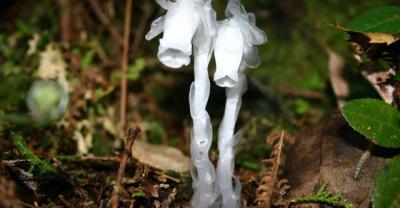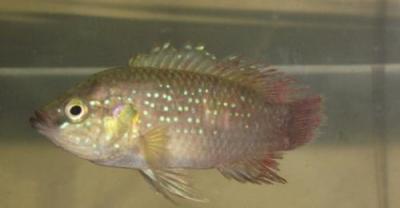Problems that must be paid attention to in artificial breeding of hare
Hare and hybrid hare are not the same concept. Now many people are using Belgium, Saibei rabbit and other rabbits that look like hares to pretend to be hares as hybrid hares. To be careful not to be deceived, the following introduces the technical problems of hare breeding.
The hare is a wild animal for both fur and meat, and the hare is a grain-saving livestock with strong resistance and adaptability, strong disease resistance, high survival rate, high reproduction rate, resistance to rough feeding, low cost and good benefit. Industry insiders believe that there is a shortage of hare meat and a large market capacity in the international market. The demand for rabbit meat in some countries in Japan, South Korea, Russia and Europe has increased greatly, and their own supply exceeds the demand, so they import a large amount of rabbit meat from China. In addition, Hong Kong, Macao and Taiwan also frequently ask for goods from the mainland. Due to the small amount of feeding at present, the domestic feeding quantity is less than 1% of the market demand. Therefore, raising rabbits is a good way to get rich. The main points of artificial rapid breeding techniques are briefly introduced as follows:
The environment requires the hare to rest in a wide range of places, usually without digging holes. But in order to avoid predators, potholes, grass, stone gaps or cracks are often used for rest. When raising in captivity, attention should be paid to creating a similar environment, and the site should be broad, hygienic and dry, so as to prevent the occurrence of infectious diseases.
The hare is mainly active at night, especially at dusk or dawn. As a result of life-long life on the ground, when encounter natural enemies, the hare try to hide, motionless. Coupled with its timidity, so breeding should try to prevent harassment and keep the environment quiet. Drinking water and forage should be provided during the day (preferably in the afternoon) for nighttime diet.
Feeding habits of hare to grass as the main food, in the cold winter, especially when snow cover, such as lack of food, will gnaw bark, twigs and grass roots. In addition, the hare has the habit of eating soft dung, which is a normal digestive function, do not think that eating dung is pica. In order to supplement the lack of food intake, you can put an appropriate amount of grass into the rabbit's circle or house every day, and put some straw in winter, such as bean straw, sweet potato vine, peanut vine and so on. Can also put some corn, bran and other concentrate, water is more indispensable. Usually put some salt on the board for the hare to eat, which can increase its appetite.
Breeding techniques after the hare is sexually mature, it begins to mate when the temperature is right. The north produces 3-4 nests per year, while the south produces 6-8 nests per year. Because of the abundant forage grass from May to October, the survival rate of young rabbits born in spring is higher. When the hare is in estrus, it chases, shakes its tail and enuises. The female rabbit is in estrus for many times, and the male rabbit fights with each other. After mating, the young rabbits with a gestation period of 30-40 days matured in the second year. During the breeding period and artificial reproduction, rabbits can be put into the herd according to the proportion of 1 male and 4 females to allow them to mate freely. people had better not intervene, so the conception rate is relatively high. After domestication, artificial auxiliary breeding can be carried out.
Disease prevention and treatment because the hare is timid, it is difficult to catch, and it is often easy to cause casualties, so it is very difficult to be vaccinated. Oxytetracycline can be added to the feed according to the amount of 0.1 grams per day, stop for 3 days for a week, and then for 3 days, which can play the role of anti-inflammation and promoting growth without disease. Dysentery can also be added to the feed once a week to prevent diarrhea and coccidiosis.
For more culture techniques, please visit (Sichuan aquaculture network http://www.yuhvv.cn)
- Prev

The cultivation method of lily pot: how to raise lilies? How to plant and maintain lilies
Lily has a beautiful appearance, its appearance is elegant and pure, and therefore deeply loved by people, many flower lovers want to plant a pot of lilies at home, but.
- Next

Correct and reasonable methods of fertilizing and watering fish ponds in aquaculture
Conventional fertilizer and water methods have certain advantages and disadvantages. How to fertilize water, how to correctly fertilize water, to discuss the pros and cons of fertilizer and water before putting down seedlings and conventional fertilizer and water.
Related
- On the eggshell is a badge full of pride. British Poultry Egg Market and Consumer observation
- British study: 72% of Britons are willing to buy native eggs raised by insects
- Guidelines for friendly egg production revised the increase of space in chicken sheds can not be forced to change feathers and lay eggs.
- Risk of delay in customs clearance Australia suspends lobster exports to China
- Pig semen-the Vector of virus Transmission (4)
- Pig semen-the Vector of virus Transmission (3)
- Five common causes of difficult control of classical swine fever in clinic and their countermeasures
- Foot-and-mouth disease is the most effective way to prevent it!
- PED is the number one killer of piglets and has to be guarded against in autumn and winter.
- What is "yellow fat pig"? Have you ever heard the pig collector talk about "yellow fat pig"?

